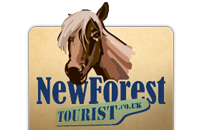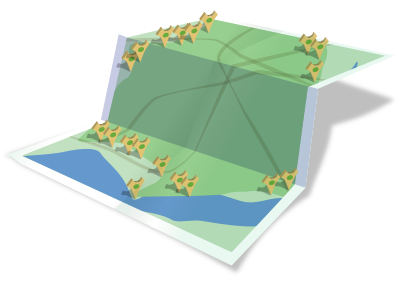New Forest Tourist Information
Tourist information for visitors to the New Forest National Park. Historical locations, Ponies and the New Forest Code.
Tourist Info
Tourist Attractions and Historical Locations
The New Forest is located in south central England and boasts an attractive coastline bordering the Solent, the stretch of water dividing the Isle of Wight from the mainland. This makes the small region rich in variety with respect to landscape, wildlife, flora and fauna, and if the New Forest Tourist fancies a day away from the heath and heather, they can board a boat in Lymington and spend the day on the water or cross to the island.
This area is hugely popular as a tourist destination due to the hundreds of miles of beautiful footpaths and open heathland, the attraction of the coastline and proximity of summer resorts such as Bournemouth, and to the many sites of historical interest such as Beaulieu Abbey, Buckler’s Hard, the (relatively) close Portsmouth Historic Shipyards, the Bronze Age barrows scattered over the area as well as Hurst & Calshot Castles to name a few.
There are also a plethora of family entertainment venues such as those found at Paulton’s Park, The National Motor Museum, a variety of forest wildlife parks, Calshot Activity Centre.
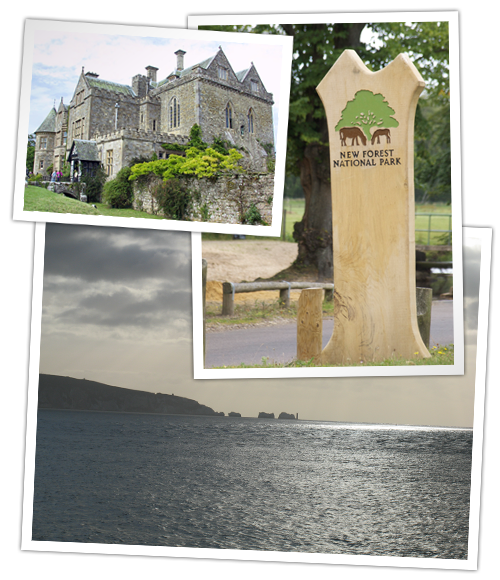
England’s smallest National Park
Granted National Park status in March 2005, the New Forest National Park covers approximately 220 square miles of Hampshire and southern Wiltshire. The area was famously named a Royal Forest in the 11th century by William the Conqueror, and with the exception of the inevitable road and rail networks spidering their way throughout it, the landscape has remained largely unchanged for thousands of years.
For King William 1 the area was an ideal hunting ground, covering over 200 square miles of ancient woodlands and heathlands close to the royal capital of Winchester. In the 14th century the royal interest in deer conservation diminished as the demand for timber increased. The new scale of timber production for ship building and fortifications prompted the inclosure of thousands of acres of forest land for timber growing.
Today, after 900 years, more than 100 square miles of the Forest is still owned by the Crown but administered by the New Forest National Park Authority. The ancient system set in place to protect the woodlands and wilderness heaths still works today through the efforts of Verderers, Agisters and Commoners, the judges, police and land users of the Forest.
The New Forest code
Although the New Forest is a free and open place, there is a code you should observe whilst in the area. This code has been implemented by the Forestry Commission and is there for the well-being of the Forest and for the safety of visitors. Preservation and long-term conservation are goals of the Forestry Commission and following their simple rules will help. The well-being of the animals and the special needs of the countryside come first.
Roads
Driving at 40mph or below on all unfenced forest roads greatly reduces the number of accidents involving ponies, cattle and deer - especially at night.
Parking
Parking on the roadside causes congestion and great damage to verges. Use one of the 150 Forest car parks, but remember to lock your car and take valuables with you.
Cycling
Cycling is extremely popular but also destructive if the cycle routes are not followed; please keep to marked paths and cycle tracks. Give way to walkers and horse-riders and please travel at moderate speeds and avoid wheel spins and skidding.
Ponies
Ponies are wild animals and should not be fed by visitors. Feeding the ponies encourages them to stray onto dangerous forest roads. Ponies and donkeys can also be very aggressive if approached, and young children are particularly at risk.
Dogs
Well behaved dogs are welcome in the National Park, and will have a great time. A Dog Walking Code is available on line at www.forestry.gov.uk. The area is famed for its wildlife and of course you must not allow your dog to chase or worry the livestock, deer or birds. If you cannot be sure of controlling your dog keep it on a lead. Please respect other Forest users. In car parks where bins are provided please pick up after your dog.
Access
You may walk on any footpath or track unless it says otherwise. By keeping to paths you greatly reduce the risk of disturbance to wildlife and their habitats.
Fire
Fire is a great threat to habitats and wildlife. No picnic or camp fires are allowed but BBQ sites are provided by the Forestry Commission. To book, telephone the Forestry Commission on 023 8028 3141.
Litter
Litter should always be placed in litter bins or taken home with you.
Residual steam from the Flying Scotsman that flew by this morning in reverse.
#FlyingScotsman #SteamLocomotive #Steam #Locomotive #Trainspotter #Train

@hurstcastleuk open again, albeit with restricted access due to the twin shadows of wall collapse and #coronavirus.
@englishheritage #hurstcastle @keyhaven_yacht_club #keyhaven #solent #henryviii #castle #lighthouse #covid_19 #catastrophe

Pre-Christmas, Tier 2 sunset over beach huts at Hordle Cliff. All will be well. #sunset #beach #tier2 #christmas #newforest #solent #milfordonsea @newforestnpa @newforestwalks #photography #lansdcapephotography #seascapephotography #landscape #seascape #cliffs #allwillbewell

Well done #Lymington - great #xmasatmos ... #xmasatmosphere #christmas #christmaslights #desertedstreets #nightphotography #newforest #lights @theelderflowerrestaurant @comitti_boats @comittiboatsukandcaribbean

A small, striking tree at Shirley Holmes in The New Forest on a sharp autumn day. #tree #NewForest #ShirleyHolms #LandscapePhotography #Photography #Nature #LateAfternoonWalk #Dogwalk #DogWalking #Landscape #gothic #Lymington #Hampshire #Tourist #England #EnglandTravel #Autumn #WinterIsComing

This sunset over Keyhaven seems like just a couple of weeks ago. Oh, hang on... it was. #sunset #seascape #missingsummer #autumn #solent #lymington

Be wary of these gentle souls during these dark days. #ponies #newforest #newforestponies #drivingawareness #dontdriveangry @newforestnpa @thenewforestuk @newforestshow

The front door of this #tinyhouse was blocked in by leaves after the strong winds this weekend. Hope they’re OK... #minaturehouse #treehouse #mousehouse #woodsidepark #lymington #miniature

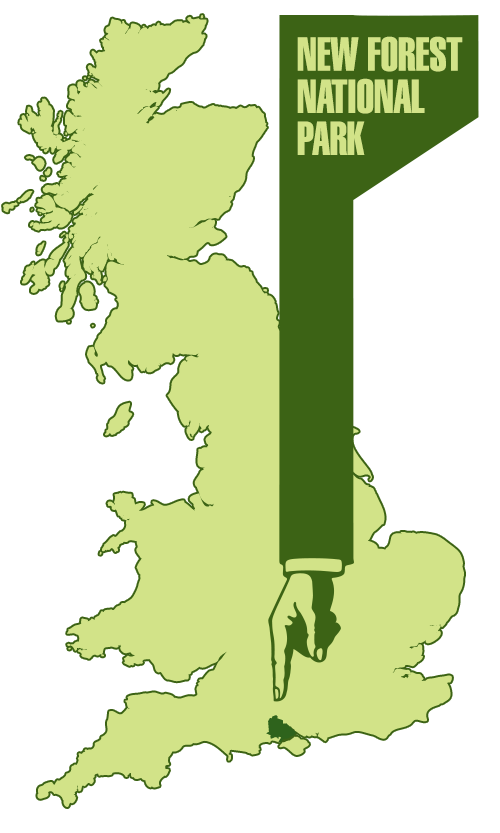
New Forest Ponies and their Hairy Friends
Ponies have been present in the area for thousands of years, but today’s carefully maintained breed, recognised as a native pony breed of the British Isles, is the result of 1000 or so years of animal husbandry. William I brought horses across the channel when he invaded in 1066, and in the intervening period the quality of the breed has reached both highs and lows.
The results of this lengthy experiment can be seen clip-clopping around the Forest to this day, and are predominantly bay and chestnut up to about 1.5 metres in height. Owned by Commoners (residents of landholdings granted the Right of Pasture), the horses are free to graze the New Forest alongside their bovine, porcine and long floppy-eared equine counterparts. These animals help to maintain the unique landscape, which continued grazing has shaped over the last 900 years.
All such animals have right of way over the (mainly) 40mph limit roads, but despite this there are many road accidents every year involving hapless animals and cars. So watch out for them – steer clear and give them a friendly wave! Trust me – they’re smiling inside, despite their long faces.
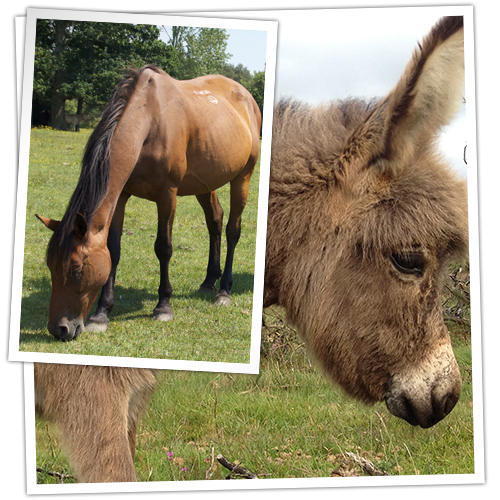
Flora and fauna
The New Forest is now recognized as one of the most unique and important wilderness areas in Western Europe. It comprises 140 square miles of a diverse range of landscapes - heaths, bogs, pine forests, moorland, and of course the ancient and ornamental beech and oak woodlands for which it is famous. There is no other area in lowland Britain that contains such a mix, and many of these habitats are increasingly rare.
Our amazing habitats are home to thousands of common and rare species of flora and fauna, including five different species of wild deer. It is estimated that nearly half of the 2,500 species of butterfly and moth in Britain have been found in the Forest. In addition, 9 rare and 25 nationally scarce species of plant are recorded. Some of these, such as the wild gladiolus, are only found here. There are also nationally important birds and rare reptiles, such as the sand lizard and the smooth snake.
The Forest is free for you to explore at your leisure and there is an extensive network of footpaths and cycle paths to help you do this. Alternatively, you can visit one of the many wildlife attractions - all of which provide organised events and activities to help you enjoy the area's natural treasures.
